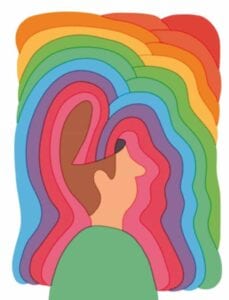Is there such a thing as Musical Dyslexia? First, an update to my last blog post and the frustrated young student: My student’s mother started working with her child consistently, daily, even just 15 or 20 minutes a day, and…(BEHOLD!) a new attitude in piano lessons was the result. The student felt confident that they knew what they were doing and what was being asked of them. It was a win-win situation for all involved!
I have another student, a very bright 8-year-old child. They do well in school, in math, reading, etc. This child has been with me 2 years. Very well coordinated, plays 2 octave scales with no problem.
However, the mother has often told me that when a new piece is given, even if I’ve gone through it at the lesson, that their daily practice session together takes a long time and is often unpleasant. The child doesn’t seem to retain the ability to recognize the notes.
Weird, right? No problems in reading, no problems in math. Daily practice.
I suggested writing notes in manuscript paper. That helped maybe a tiny bit, but no real noticeable improvement. Then I suggested flashcards, but again, no real noticeable improvement. I have also observed that the child has a very difficult time in understanding simple rhythms. I do physical, rhythmic games that I learned from Dalcroze Eurythmics, but the child cannot transfer the sense of what the legs are doing in one rhythm into hands clapping the same rhythm, much less playing the rhythm on the piano.
 Then I came across an article written by retired British pediatric neurologist, Neil Gordon, about Musical Dyslexia. That led me to reading further and even writing the British Dyslexia Association.
Then I came across an article written by retired British pediatric neurologist, Neil Gordon, about Musical Dyslexia. That led me to reading further and even writing the British Dyslexia Association.
They wrote me back and suggested I further examine their website. There are so many good ideas there! One in particular that I liked was using colors. I had the child bring crayons to the lesson and when they would get stuck on a note (after playing the same note with no difficulty in a few measure previously), I would have them find all the same notes on the page and color it with the same color. (Ex: All “A’s” would be blue, all “C’s” would be red) I only allow 2 or 3 different colors on the page, otherwise, it gets too distracting.
Something started to happen. The child began to relate the notes on the page to the other notes near it and the reading is improving. We have also started to color the 8th note beams, and the rhythm is starting to improve because the child can finally relate to it.
I’ve very excited about this and will see what happens in future lessons.
Until next time,
Laura

